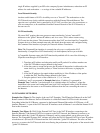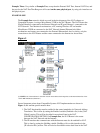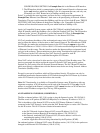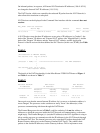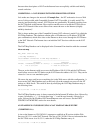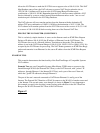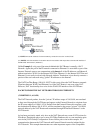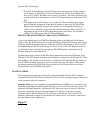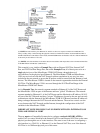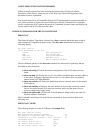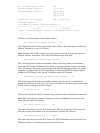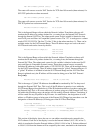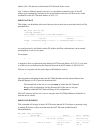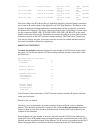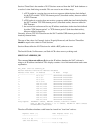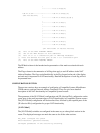
(*) NOTES: IP sub−interface ports Ethernet 0.1 and 0.2 are shown as seperate connections in FIGURE 3 for
clarity, but they really connect through the physical connection of Ethernet 0 and the "External Ethernet Hub" to
the MR 1250i Router at IP address 198.41.10.98, the MR 2250R Router at IP address 198.41.9.196 and Macintosh
at the NAT 'private' address of 10.5.0.5.
(**) NOTES: All of the machines in the NAT network must address their IP packets to the NAT Internal Interface
of the MR 2220R "NAT Router" (Ethernet 0.1).
This example is very similar to Example Two, with an External NAT Port, Internal NAT
Port, and NAT PassThru Range Port; but unlike Example Two, all of these ports exist on a
single physical port of the MicroRouter 2220R NAT Router, through the use of
sub−interfaces on the physical port Ethernet 0. The MicroRouter 2250R and MicroRouter
1250i are not involved with the NAT Network address translations in any way, but were
included in the test network to prove that IP packets could be routed from the Internet to both
devices. The MicroRouter 2250R is located on the network segment that includes the External
NAT Port. The MicroRouter 1250i is accessed through the NAT PassThru Range of the
MicroRouter 2220R NAT Router.
As for Example Two, the network segment attached to Ethernet 0.2 of the NAT Router and
the MicroRouter 1250i are part of the Internet and have "global" IP addresses. The network
segment attached to Ethernet 0.1 of the NAT Router and the Macintosh at IP address 10.5.0.5
are part of the NAT Network and have "private" IP addresses chosen by the user and can only
communicate with the Internet if the MicroRouter 2220R NAT Router translates IP addresses
being exchanged between the NAT Network and the Internet. The user has control over the
access between the NAT Network and the Internet, through the configuration of the NAT
variables in the MicroRouter 2220R.
IMPORTANT NOTE FOR USING NAT ON PORTS WITH SUB−INTERFACES ON
THE SAME PHYSICAL PORT
The user must use Compatible Systems device software version 4.4.02 OR LATER to
enable NAT on routers which have the Internal NAT Port and External NAT Port on the same
physical port through the use of a sub−interface. The same is true if the user is configuring a
sub−interface (e.g. WAN 0.1 or Ethernet 0.1) as the External NAT Port, even if the Internal
NAT Port is on a different physical port of the router.



